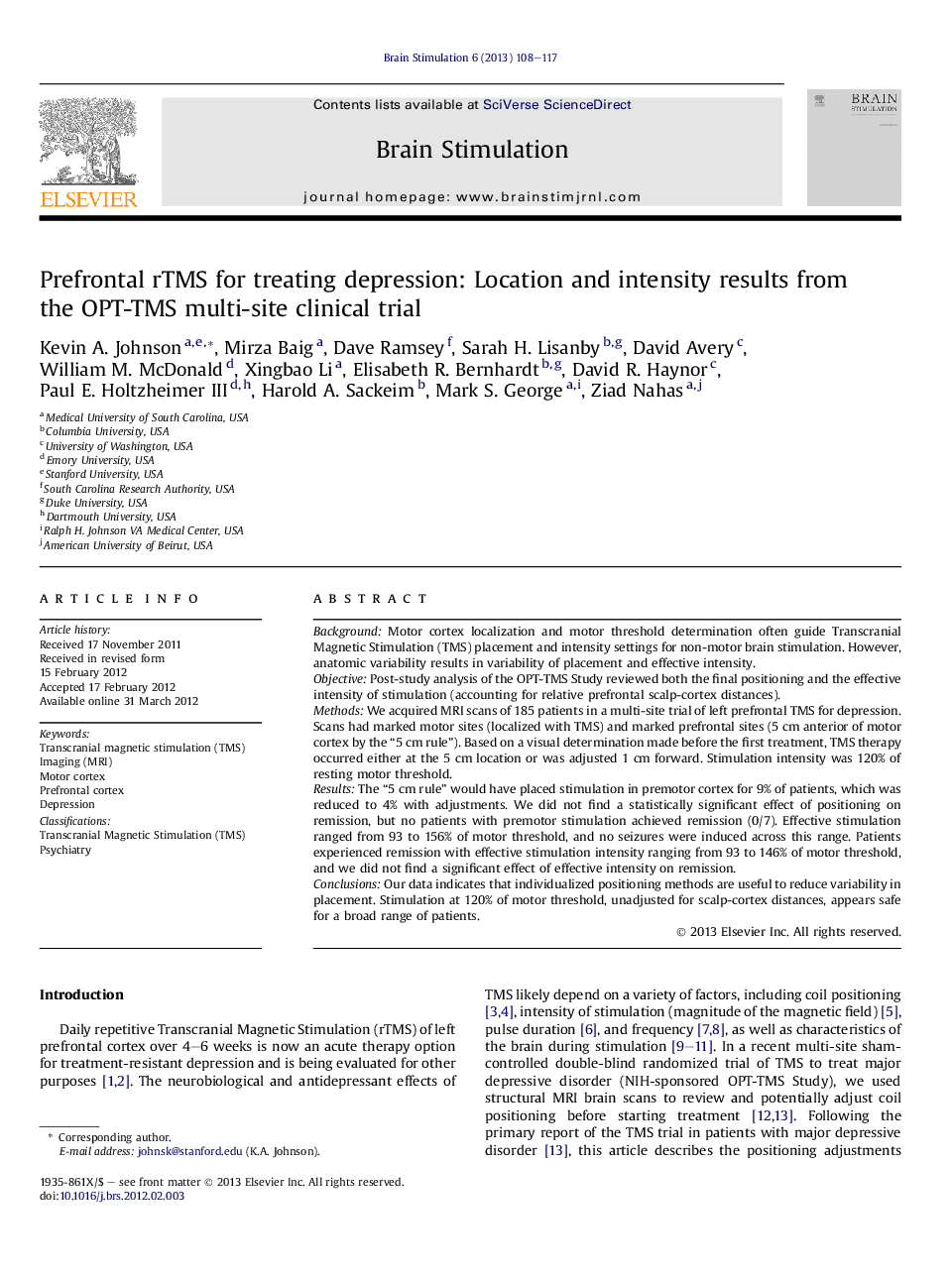| Article ID | Journal | Published Year | Pages | File Type |
|---|---|---|---|---|
| 6006318 | Brain Stimulation | 2013 | 10 Pages |
BackgroundMotor cortex localization and motor threshold determination often guide Transcranial Magnetic Stimulation (TMS) placement and intensity settings for non-motor brain stimulation. However, anatomic variability results in variability of placement and effective intensity.ObjectivePost-study analysis of the OPT-TMS Study reviewed both the final positioning and the effective intensity of stimulation (accounting for relative prefrontal scalp-cortex distances).MethodsWe acquired MRI scans of 185 patients in a multi-site trial of left prefrontal TMS for depression. Scans had marked motor sites (localized with TMS) and marked prefrontal sites (5Â cm anterior of motor cortex by the “5Â cm rule”). Based on a visual determination made before the first treatment, TMS therapy occurred either at the 5Â cm location or was adjusted 1Â cm forward. Stimulation intensity was 120% of resting motor threshold.ResultsThe “5Â cm rule” would have placed stimulation in premotor cortex for 9% of patients, which was reduced to 4% with adjustments. We did not find a statistically significant effect of positioning on remission, but no patients with premotor stimulation achieved remission (0/7). Effective stimulation ranged from 93 to 156% of motor threshold, and no seizures were induced across this range. Patients experienced remission with effective stimulation intensity ranging from 93 to 146% of motor threshold, and we did not find a significant effect of effective intensity on remission.ConclusionsOur data indicates that individualized positioning methods are useful to reduce variability in placement. Stimulation at 120% of motor threshold, unadjusted for scalp-cortex distances, appears safe for a broad range of patients.
